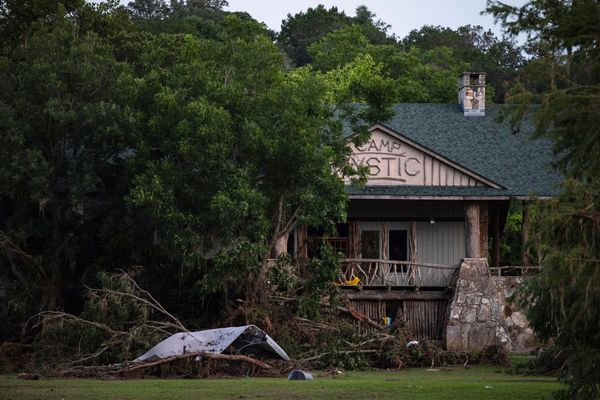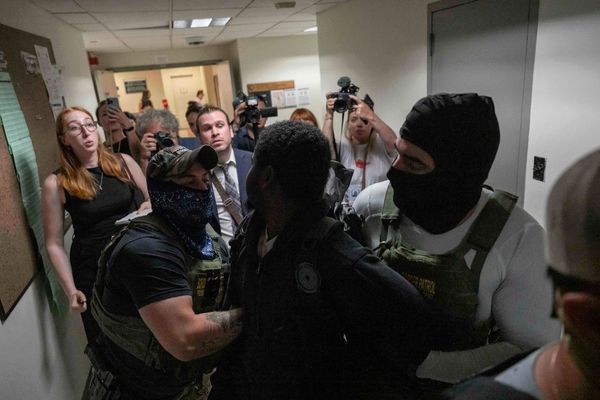It was the mystery that captured the imagination of the world, as a Russian Imperial dynasty was ruthlessly executed before details of their disappearance obfuscated for decades.
The true story of how Britain's Duke of Edinburgh helped piece together the murders of Tsar Nicholas II and his family is to be told by London's Science Museum in a new exhibition detailing how his DNA provided the key.
/arc-anglerfish-syd-prod-nzme.s3.amazonaws.com/public/5GJW5IO57VHUDB24Y2FHRFSHOM.jpg)
The Duke, who offered a blood sample to experts attempting to identify bodies found in unmarked graves in 1993, provided a match with the Tsarina and her daughters, related through the maternal line, proving once and for all their fate.
The research by that team, known in detail only to scientists until now, will be put on display for the first time, with graphs of the Tsar's own DNA exhibited alongside details of the Duke's contribution of five cubic centimetres of blood.
The Duke is the grand-nephew of the Tsarina, with her older sister Victoria Mountbatten his maternal grandmother.
/arc-anglerfish-syd-prod-nzme.s3.amazonaws.com/public/QIDPJ4U4RFEA5INZ65AVQCU2WY.jpg)
He was invited to assist the investigation into her murder by Dr Peter Gill and his team at the Forensic Science Service, who used mitochondrial DNA analysis to determine they have proved "virtually beyond doubt" that bones found in a grave in Yekaterinburg in July 1991 were those of the Romanovs.
A spokesman and a curator yesterday told the Telegraph that a graph showing the Duke of Edinburgh's own DNA profile would be put on display, before later clarifying that they would only include a description in the exhibition text.
/arc-anglerfish-syd-prod-nzme.s3.amazonaws.com/public/HQLVI3TR65DGZKHQVG4P2EDTNE.jpg)
The Duke, now 97, is keenly aware of his family history, reported to have once answered a question about whether he would like to travel to Russia with the words: "I would like to go to Russia very much, although the ba----ds murdered half my family".
The Science Museum exhibition, The Last Tsar: Blood and Revolution, is designed to explore the decades of scientific development which have helped experts piece together what happened to the Romanov family, opened in the centenary of their executions.
/arc-anglerfish-syd-prod-nzme.s3.amazonaws.com/public/2F6BXEDRONDJLIJZ2FGY6RNK6Q.jpg)
Featuring objects never seen in the UK before, a spokesman said it would "take visitors behind the scenes of one of the greatest mysteries of the 20th century" from 1900 to 1918.
Tsar Nicholas II, Tsarina Alexandra and their five children Olga, Tatiana, Maria, Anastasia, and Alexei were killed on July 17, 1918, in Ekaterinburg and their bodies left in two unmarked graves.
The 100-year-old murder case has still not been officially closed, with the Russian Orthodox Church will declining to recognise the bones of the Romanovs and allowed them burial with full rites.
/arc-anglerfish-syd-prod-nzme.s3.amazonaws.com/public/6ANPSTOI65HKBHR32AST4THN7A.jpg)
Yesterday, that process moved one step closer after genetic tests ordered by the Church "confirmed the remains found belonged to the former Emperor Nicholas II, his family members and members of their entourage," according to its Investigative Committee.
The Science Museum exhibition will allow members of the public to examine evidence "from the scene of the execution", including the dentures of the imperial physician, a single diamond earring belonging to the Tsarina, and an icon ravaged by bullet holes.
It will also include a photograph album created by the Imperial children's English tutor, the family's personal diaries, and an Imperial Fabergé Egg given as a gift by the Tsar to his wife.
/arc-anglerfish-syd-prod-nzme.s3.amazonaws.com/public/52FY6QOKDBDSLKXLH2G2NUQGYY.jpg)
A spokesman said: "This investigation was one of the first occasions that forensic DNA analysis was used to solve a historic case, involving the best British experts under the direction of Dr Peter Gill from the Forensic Science Service.
"Blood samples from relatives, including His Royal Highness The Duke of Edinburgh, and advances in DNA profiling and 3D reconstruction, helped to positively identify the remains of the imperial family and enabled the investigation to reach convincing conclusions."







